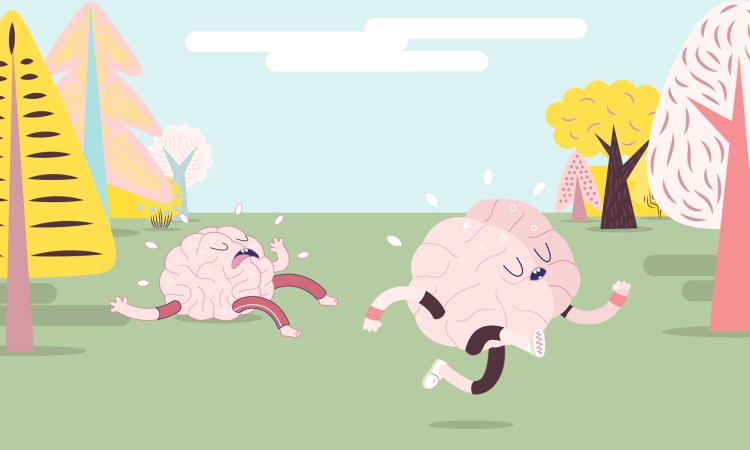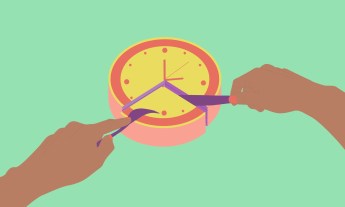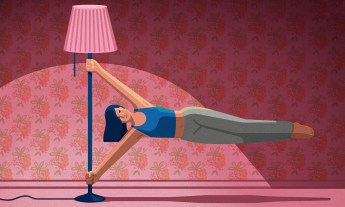
Wise ideas from psychology, behavioral economics, business — and even activism — to get you moving.
Excuse #1: “I don’t have the time to exercise.”
The fix: You’ve got plenty of time; the trick is being intentional about how you use it.
There are 168 hours in a week. Even after you subtract 56 hours to sleep and 50 for work, you’re left with 62 hours, as business writer Laura Vanderkam points out in her TED Talk. Her empowering conclusion: “We have the power to fill our lives with the things that deserve to be there.”
If you truly want to start working out, you must place it high on your mental to-do list. Then you need to put it in your physical schedule, by planning your week before you’re in it, she says: “I find a really good time to do this is Friday afternoons.”
By entering workout appointments in your calendar for the coming week — for added incentive, send a friend an e-vite — you’ll avoid the dreaded Sunday-night syndrome known as wheredidallmy*&!timego.
Excuse #2: “I’m just so comfortable at home right now; I’ll start exercising next week.”
The fix: Put yourself in the future.
When it comes to temptation, we humans are engaged in a righteous struggle between our present self and our future self. Our future self knows it’s in our best interest to exercise, but “it’s an unequal battle” between the two selves, says Microsoft Research behavioral economist Dan Goldstein. “The present self is present. It’s in control. It has these strong, heroic arms that can lift donuts into your mouth. The future self is not even around, and so the present self can trounce all over its dreams.”
How to vanquish that donut-eating present self? Engage in mental time travel. While Goldstein designs software that helps people imagine their future life under different scenarios, you can try your own version. Picture yourself in 20 or 30 years if you don’t start exercising. Are you struggling to pay huge medical bills? Winded by running after your grandkids? Now, picture what your life could be like if you do get fit.
Excuse #3: “I’d much rather listen to This American Life/watch Netflix/catch up on the news/read Elena Ferrante than go work out.”
The fix: You can do both at the same time.
Charles Dickens published all of his novels as serials, releasing them one chapter at a time, first in magazines and then as standalone pamphlets. It was said that demand became so great, his readers w0uld gather dockside to wait for the ships with the next installment so they could find out what happened.
Could you make this need-to-know work for you? Why yes, according to Wharton School of Business behavioral scientist Katherine Milkman. For one experiment, she recruited participants who wanted to exercise more. Half the subjects were randomly assigned to a group that got iPods loaded with absorbing audiobooks (such as The DaVinci Code or The Hunger Games) that they could listen to only at the gym; the other half were given an equally valued gift certificate to Barnes & Noble. The result: The audiobook group exercised significantly more.
Make it a rule that you can consume your favorite stories (Netflix/novel/podcast/news) only while exercising. “Temptation bundling” is what Milkman calls this pairing of a pleasurable activity with a desired habit; we call it inspired.
Excuse #4: “I feel like I’m out of shape, and I dread going to the gym with all those workout fanatics staring at me.”
The fix: People will judge, but you don’t need to be one of them.
Our society is weight-ist, says activist and artist Kelli Jean Drinkwater. “We live in a culture where being fat is seen as being a bad person — lazy, greedy, unhealthy, irresponsible and morally suspect. And we tend to see thinness as being universally good.”
Drinkwater calls on us to examine these attitudes, in others and in ourselves. She asks, “Do we really want to live in a society where people are denied their basic humanity if they don’t subscribe to some arbitrary form of acceptable?”
Rather than seeing exercise as a way to punish ourselves for not being “perfect,” it can be a way for us to take care of our bodies. As Drinkwater says, “Reclaiming yourself can be one of the most gorgeous acts of self-love and can look like a million different things, from hairstyles to tattoos to body contouring to hormones to surgery and, yes, even weight loss.”
Excuse #5: “When I think about working out, I picture myself panting, red-faced and in pain, so I find something else to do.”
The fix: Take a tip from top athletes, and imagine a different scenario.
You’ll frequently see Olympians frown right before they compete, but most of them are not worrying about the event (even though that’s what it looks like they’re doing). They’re engaging in imagery — visualizing what’s to come.
“Imagery is a mental rehearsal,” says sports psychologist Martin Hagger of Curtin University. He likens it to watching a mental video of a performance that hasn’t yet happened.
Hagger talks about Croatian high jump champ Blanka Vlašić, saying, “She was very famous for going through the same performance routine prior to a competition. She’d close her eyes, visualize a successful jump, clap her hands rhythmically. That would boost both her motivation and her confidence.”
Even though you’re not doing the high jump — thank goodness — you can use that same trick. After you’re in your workout gear but before you make a move, close your eyes and envision as vividly as possible what you’re about to do.
For example, if you’re going for a run, what landmarks will you pass? What obstacles (bikers, traffic) will emerge? Picture yourself navigating around them. At what point will you turn around? Where will you end your run? Try to see every step as if you’re watching it in fast forward. Okay? Then take one last breath, open your eyes, and go.

















